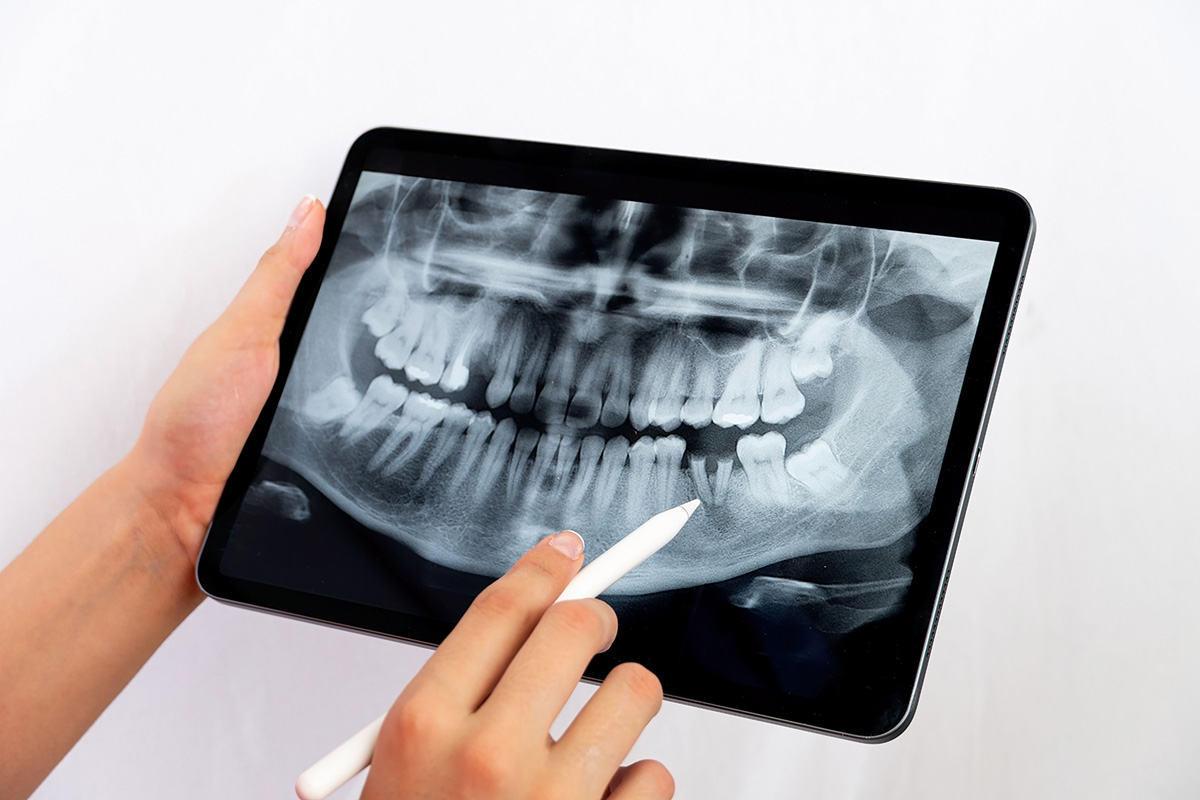Dental X-rays or radiographs are images of your teeth, jaw and surrounding structures. Dentists use X-rays to check the structures and diagnose a wide range of Oral Health issues.
Dental X-rays show:
- Cavities, especially small areas of decay or demineralisation between teeth
- Decay beneath existing fillings
- Bone loss in your jaw
- Areas of infection or abscess
- The position of unerupted or impacted teeth such as wisdom teeth
- Cysts and some types of tumours
Dentists also use X-rays to determine your eligibility for treatments like dental implants or dentures. X-rays help your dentist check healing after certain procedures, too, such as a root canal.

How does it work?
Similar to X-rays taken of your body, dental X-rays use electromagnetic radiation to capture images of your mouth. The radiation beam passes through your soft tissues and creates images of your teeth and bones.
Dental X-rays may be traditional (taken with film) or digital (taken with digital sensors). Digital dental X-rays use 80% to 90% less radiation compared to traditional dental X-ray’s.
Should I have dental X-rays while pregnant?
It is safe to have X-rays of your teeth while pregnant! In fact, both many current researches have stated that dental X-rays pose little to no risk to a fetus. Even so, we still recommend waiting to book for your check up until after the first trimester as a precaution and if you need treatment the second and third trimester is better for your overall well-being during pregnancy.
Can I refuse dental X-rays?
Of course you have the right to refuse dental X-rays. It is important to understand that most dentists won’t provide services without them. The reason being we won’t know the extent of decay, bone health or infection without it and while undergoing treatment may need to progress to a more intensive treatment resulting in extra time and financial burden.
The nitty gritty: how much radiation is there in dental X-rays?
Here’s a little overview of radiation exposure from different things.
- The average yearly exposure to radiation from natural sources is equal to 3.2 millisevert (mSv). If we divide that by 365, that’s around 0.009msV per day.
- A 2-hour flight would expose you to 0.035 mSv
- A banana can expose you to 0.1 mSv (how crazy is that?!)
So how much radiation exposure is there in dental X-rays?
A standard dental examination includes 2 bitewing X-rays (a view of both sides of the mouths back teeth). Each bitewing X-ray can expose you to 0.001 mSv, so a total of 0.002mSv in a standard checkup.
Dentists also like to do an Orthopantomagram X-ray (OPG) to show all the surrounding structures of the head and a full view of all teeth in your mouth and bone levels. This has a slightly higher dose with an exposure of 0.007 mSv.
Conclusions
As we know radiation in high doses can cause significant harm to our bodies but when it comes to dental X-rays the dose is almost completely insignificant. You’d get more radiation from eating a banana than having a full set of bitewings and an OPG.
Furthermore, the benefits and diagnostic ability from having your dental X-rays done on a yearly basis largely outweigh the associated low risk.
Remember we are always here to listen to your concerns and are happy to help you talk through the pros and cons of getting dental X-rays and will never push you to do something you don’t feel comfortable doing!

Leave A Comment